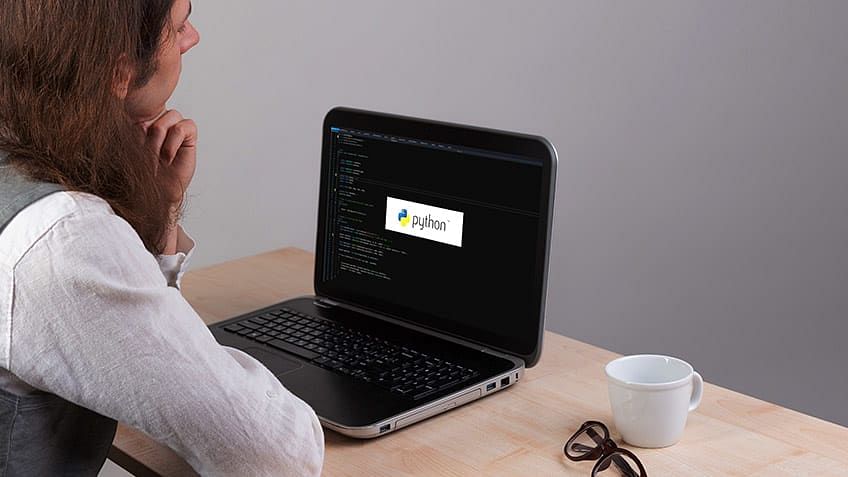Python is a scripting language that is highly readable, interactive, high-level, object-oriented, and interpreted. Python has lesser syntactic structures than other programming languages, and it typically uses English terms instead of punctuation.
Main Features Of Python include:
- Beginner-friendly Language - Python is easy to learn, maintain, implement and read. It is interactive in nature.
- Object-Oriented - Python encapsulates code within objects by supporting the Object-Oriented programming approach or style or approach.
- Industry-oriented - Python is extendable, portable, scalable, cross-platform friendly with a standard library, and has support for GUI applications and interactive mode.
What is Polymorphism in Python?
In Python, polymorphisms refer to the occurrence of something in multiple forms. As part of polymorphism, a Python child class has methods with the same name as a parent class method. This is an essential part of programming. A single type of entity is used to represent a variety of types in different contexts (methods, operators, objects, etc.)
Polymorphism may be used in Python in various ways. Polymorphism can be defined using numerous functions, class methods, and objects. So, let us deep-dive into each of these ways.
Learn more about Python and Data Science with our Caltech Post Graduate Program In Data Science.
Polymorphism With Function and Objects
To induce polymorphism using a function, we need to create such a function that can take any object. Here is an example of Polymorphism using functions and objects:
Code
class Dog():
def animal_kingdom(self):
print("Mammal")
def legs(self):
print("Four")
class Lizard():
def animal_kingdom(self):
print("Mammal")
def legs(self):
print("Four")
def function1(obj):
obj.animal_kingdom()
obj.legs()
obj_dog = Dog()
obj_lizard = Lizard()
function1(obj_dog)
function1(obj_lizard)
Output
Mammal
Four
Mammal
Four
In the above example, the function, function1() takes in an object named obj, which in turn lets the functions call the methods, animal_kingdom() and legs() of both the classes, Dog and Lizard. To do this, we must create the instances of both classes.
Polymorphism With Class Methods
Let us discuss how to implement Polymorphism in Python using Class Methods.
In the same way, Python makes use of two separate class types. For this, we design a for loop that iterates through an item tuple. After that, we need to perform method calling without regard for the class type of each object. We take it for granted that these methods have their existence in each of the classes.
A perfect example depicting Polymorphism with Class Methods using Python:
Code
class Car():
def wheels(self):
print(4)
def mode_of_transport(self):
print("Private usually")
class Bus():
def wheels(self):
print(8)
def mode_of_transport(self):
print("Public usually")
obj_car = Car()
obj_bus = Bus()
for vehicle in (obj_car, obj_bus):
vehicle.wheels()
vehicle.mode_of_transport()
Output
4
Private usually
8
Public usually
In the above example, class methods wheels(), mode_of_transport(), which belong to Car and Bus classes, are directly invoked using the instances of these two classes in the for loop, which loops through both the class methods.
Polymorphism With Inheritance
Polymorphism, a child class method is allowed to have the same name as the class methods in the parent class. In inheritance, the methods belonging to the parent class are passed down to the child class. It's also possible to change a method that a child class has inherited from its parent.
This is typically used whenever a parent class inherited method is not appropriate for the child class. To rectify this situation, we use Method Overriding, which enables re-implementing of a method in a child class.
What Is Method Overriding?
Method overriding is an object-oriented programming technique that lets us change the function implementation of a parent class in the child class. Method overriding is basically a child class's ability to implement change in any method given by one of its parent classes.
Conditions of Method Overriding:
- There should be inheritance. Within a class, function overriding is not possible, therefore a child class is derived from a parent class.
- A function of the child class should have the same number of parameters as that of the parent class.
We know that in inheritance, a child class gets access to the protected and public methods and variables of the parent class whenever it inherits it. We exploit this concept to implement Polymorphism using Inheritance as well.
A perfect example of Method Overriding and Polymorphism with Inheritance is:
Code
class Vehicle:
def desc(self):
print("So many categories of vehicle")
def wheels(self):
print("Differs according to the vehicle category")
class car(Vehicle):
def wheels(self):
print(4)
class bus(Vehicle):
def wheel(self):
print(8)
obj_vehicle = Vehicle()
obj_car = car()
obj_bus = bus()
obj_vehicle.desc()
obj_vehicle.wheels()
obj_car.desc()
obj_car.wheels()
obj_bus.desc()
obj_bus.wheels()
Output
So many categories of vehicle
Differs according to the vehicle category
So many categories of vehicle
4
So many categories of vehicle
Differs according to the vehicle category
Master Python and Data Science With Simplilearn
In this article, we discussed Polymorphism and its different types in Python. Polymorphism is a very important OOP Concept and has several real-life uses as well in Python or any other OOP-related programming languages.
With relevant practice, examples, and deep diving, one can master any concept related to Python and/or OOPS. For this, we recommend checking out our Caltech Post Graduate Program In Data Science to truly master Python and Data Science.
